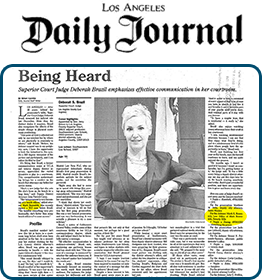When defending a DUI case, you must be able to understand and diffuse the prosecution and scientific interpretation. The prosecution will put forth what they claim as science interpreted not by scientists, but by criminalists, and make no mistake, criminalists are not the same thing as scientists. Scientists have been studying the effects of alcohol on the human body for hundreds of years but only in earnest for the last 100 years or so.
Much of the so-called science that state prosecutor crime lab criminalists used in an effort to obtain convictions of people accused of driving under the influence is based on scientific experiments conducted about a 100 years ago. These scientific experiments were not conducted in accordance with today’s high scientific standards but were done with relatively small groups of people in relatively uncontrolled situations.
These initial studies lack significant information to determine accurate blood alcohol concentration levels over time. Many of the world-renowned experts agree that although there may be generally accepted principles, the variation in person to person can be significant and that translates in a DUI jury trial into a question of whether or not there is doubt in the accuracy of the experts’ opinion.
One area of science that is fraught with errors is the back tracking or guessing backwards in time to try to determine what an alcohol level was. This occurs when someone is arrested on the roadside and then transported to a police station or hospital for a test. The state’s experts will then attempt to calculate what the alcohol level was at the time of driving or at the time that the person was out on the road.
The problems that come along with this are numerous.
Some experts in the field feel that this retrograde extrapolation or guessing backwards can be done accurately. Others would agree that it is a dubious practice and should not be done in a forensic context or where somebody’s liberty is at stake.
In order to do a retrograde extrapolation, you would need to know what the person ate and drank, when it was consumed, how much was consumed, as well as the person’s gender, age, weight, the time period over which the alcohol was consumed, and how alcohol is absorbed by that individual person.
What many criminalists will do is statistical averages. The problem is that these statistics are not based on scientific reality.
Erik M. P. Widmark, known as the grandfather of retrograde extrapolation because of his invention of it, calculated certain figures based on testing 20 men and 10 women and then tried to determine particular values of alcohol in the blood over time in being able to calculate backwards. His testing was all done on subjects who had not consumed any food and that is a huge variation in what a chemical test result of blood alcohol level would show over time. Additionally, there is significant variability even within the subjects that he tested. It has been proven over time that the Widmark calculations are not accurate for the general drinking population. The way that men and women consume and absorb and eliminate alcohol varies, and even men and women in general would vary from person to person based on all of the previously listed factors which show significant variation from one person to the next or even within the same person from time to time.
Another very important factor in determining an alcohol level based on a time taken later is whether the person was absorbing alcohol, plateauing or eliminating, or in the elimination phase (sometimes referred to as the post absorptive state). If somebody is in the process of increasing alcohol level or plateauing, a reverse extrapolation really should not be done at all. If they are in a post absorptive state, then, with certain safeguards, a range or an estimate of alcohol levels may be able to be determined.
This range is still based upon certain assumptions that may or may not be true for an individual, and wherever we have a question as to whether or not a particular person is in a particular situation, we have a doubt as to what the true outcome is. Even the same person consuming the same alcohol and food on a different day may process it in a different fashion,thus changing the true blood alcohol level at any given time.
Therefore, honest scientists and criminalists will not give specific blood alcohol levels if they are trying to perform retrograde extrapolation but would rather give a range or an estimate of what it could be based on scientific literature. The truth of the individual person’s blood alcohol level still would remain a mystery.
It is important to be able to bring these issues to light in a jury trial to show the science vs. criminalists’ opinions and what the range of opinions could be and what effect that would have on an individual’s blood alcohol level, putting the true blood alcohol level in question or putting that level below a legal threshold.






 Personal Attention
Personal Attention Every criminal case is unique and no attorney can guarantee the outcome of a case. The information on this site is legal advertising and for general information only. Using this site, requesting books, information, consultations or communicating with Attorney Rosenfeld through its site does not form an attorney/client relationship.
Every criminal case is unique and no attorney can guarantee the outcome of a case. The information on this site is legal advertising and for general information only. Using this site, requesting books, information, consultations or communicating with Attorney Rosenfeld through its site does not form an attorney/client relationship.








